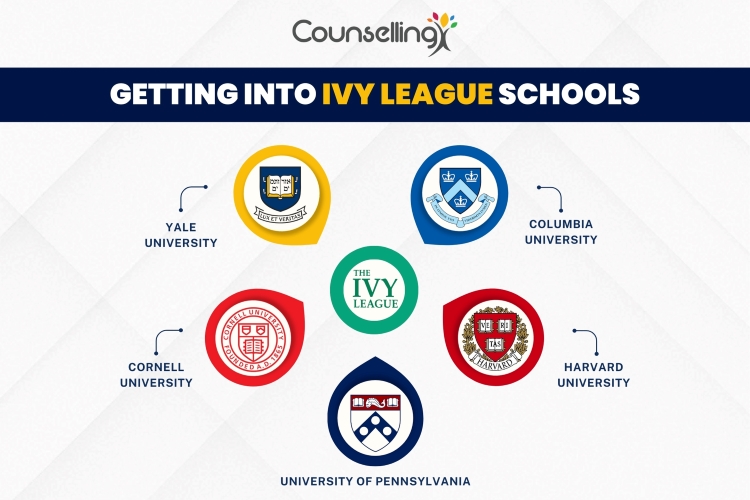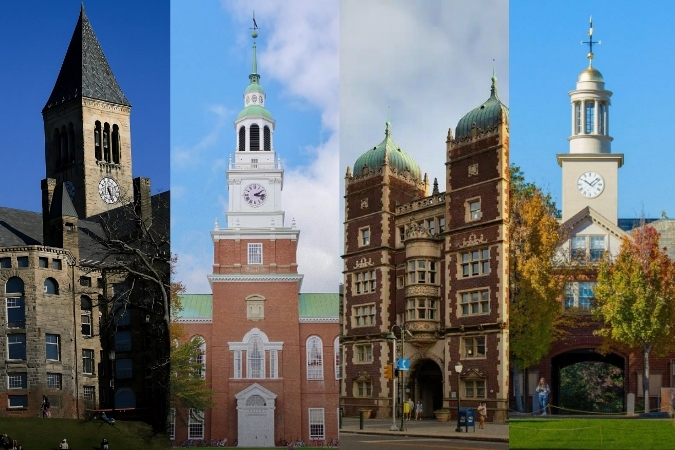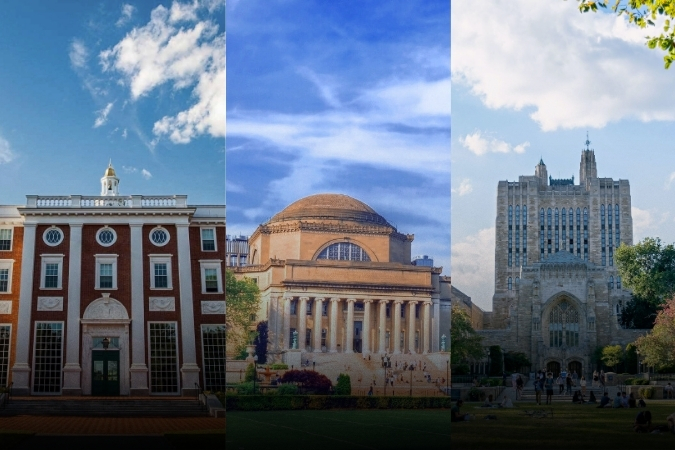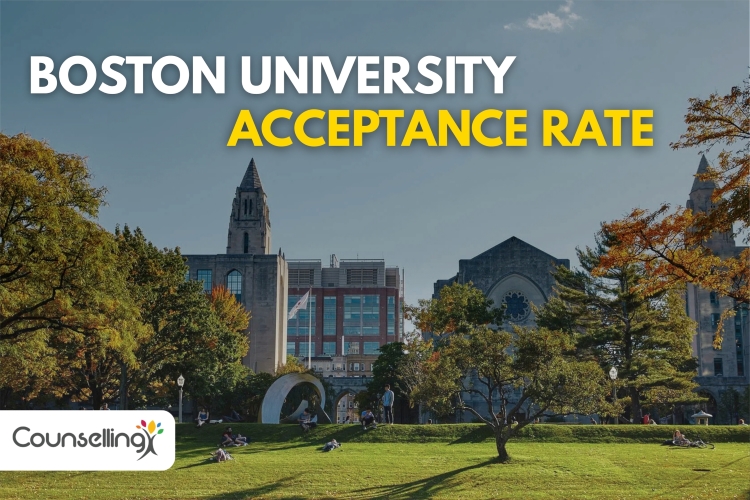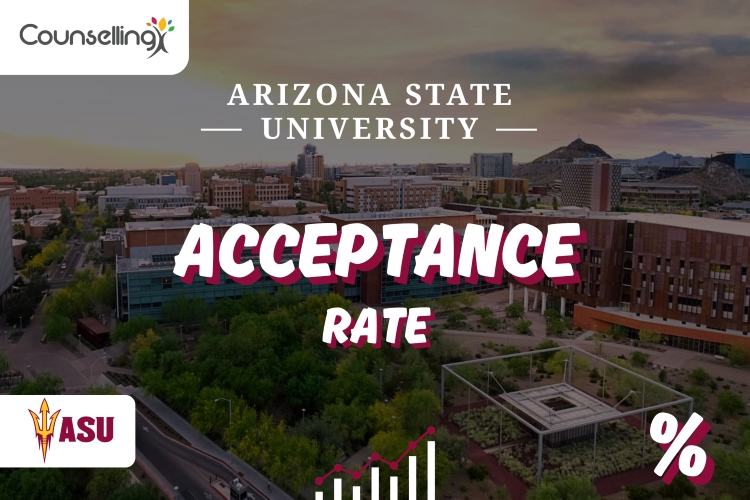Which Ivy League school is the easiest to get into?
A million-dollar question that thousands of applicants looking to study in the USA ask themselves. While all Ivy League schools are highly competitive due to their prestige, picking one from the Ivy League list takes a lot more than just knowing the acceptance rates. So, what is it exactly that sets “easiest” or “hardest” Ivy League Schools apart?
Keep in mind that getting into an Ivy League school is generally hard; there are still apparent differences in acceptance rates, applicant pool sizes, and yield rates that help create a more elaborate college list strategy, which we will discuss later.
As for the question that we mentioned earlier, read on…..
Let’s have a quick comparison
|
Universities |
Overall Acceptance Rate |
Early Decision |
Regular Decision |
Yield Rates |
|
Harvard |
3.6% |
8.78% |
2.70% |
83.6% |
|
Columbia |
3.85% |
11.9% |
2.89% |
63.8% |
|
Yale |
3.7% |
9.02% |
2.90% |
- |
|
Princeton |
4.6% |
- |
4.6% |
75% |
|
Brown |
5.2% |
14.4% |
3.81% |
65% |
|
UPenn |
5.4% |
- |
4.07% |
- |
|
Dartmouth |
5.4% |
17.07% |
3.84% |
69% |
|
Cornell |
7.8% |
18% (est.) |
8.41% |
63% |
What Are the Easiest Ivy League Schools To Get Into?
Cornell University
Cornell is regarded as the "easiest" Ivy League school to get into, as the university has the highest acceptance rate among the Ivy League universities. The university also doesn’t have a hard GPA cutoff compared to other Ivy League schools. Usually, the university requires a cumulative GPA of 3.7.
|
Overall acceptance rate |
8.7% |
|
SAT range |
1450–1550 |
|
Early decision acceptance |
18–22% |
|
Yield rate |
Moderate |
Dartmouth College
Dartmouth College is currently the second-easiest Ivy League school to gain admission to. One reason for Dartmouth’s present standing is its accessibility. Despite being an Ivy League institution, Dartmouth boasts a significantly higher acceptance rate because many students choose to submit their applications during the early decision round.
|
Overall acceptance rate |
5.8% |
|
SAT range |
1440–1560 |
|
Early decision acceptance |
19–21% |
|
Yield rate |
Moderate |
University of Pennsylvania
Based on its overall acceptance rate of 5.4% for the Class of 2028, UPenn is the third easiest Ivy League to get into, but virtually on par with Dartmouth. While UPenn hasn't officially released its early admission data, our strategists estimate the early acceptance rate to be around 14%.
Like all Ivy League schools, UPenn is still highly selective. With a faculty-to-student ratio of 6:1, UPenn's intimate environment allows students to get individualised attention from some of the best teachers in the world.
|
Overall acceptance rate |
5.4% |
|
SAT range |
1460–1560 |
|
Early decision acceptance |
14–16% |
|
Yield rate |
High |
Brown University
Brown University is famous for its "Open Curriculum," which enables students to customise their education. This adaptable system, along with a relatively higher acceptance rate, contributes to its status as one of the more accessible Ivy League institutions.
|
Overall acceptance rate |
5.4% |
|
SAT range |
1460–1570 |
|
Early decision acceptance |
13–15% |
|
Yield rate |
High |
What Makes These Ivy League Schools Easy To Get Into?
Early Decision Boost
Let’s be honest, the Ivy League schools are competitive, but if you apply Early Decision, your odds will be much better compared to Regular Decision.
Test-Optional Advantage
A few Ivy’s, such as Brown, don’t require SAT or ACT scores. And yes, plenty of students get in without them. So if your test scores aren’t Ivy-level but the rest of your application shines, you’re still in the game.
SAT Scores Are Competitive, Not Cutthroat
While Penn, Brown, and Cornell are selective, their average SAT range (1400–1600) isn’t as competitive as MIT or Princeton. If you’re in that range and show solid academic potential, you won’t feel out of place.
Creative minds are not just cherished, they are loved
The admissions committee has changed; applications are no longer read to identify the student with the highest GPA (while a good one still matters) or the most papers written. They look for passionate, unconventional, or academically curious students.
What Ivy League Schools Are Hard To Get Into?
Harvard University
Founded in 1636, Harvard is the oldest higher education institution in the U.S. and is recognised as the most challenging Ivy League school to be admitted to. It offers a premier education led by some of the world's brightest minds. The university looks for self-driven students eager to make a positive impact. If you aim to attend Harvard, consider how you can contribute to the campus community and represent the Harvard name in the broader world.
|
Overall acceptance rate |
3.6% |
|
SAT range |
1500–1600 |
|
Early decision acceptance |
8.7% |
|
Yield rate |
High |
Columbia University
Columbia is one of the elite schools in New York City. The university hosts three undergraduate schools and 15 graduate and professional schools. Whether you’re looking to study photography, music, visual arts, nursing, engineering, or pre-med, Columbia has something for everyone! As the only Ivy League school set in a major metropolitan city, Columbia’s selectivity has always been the talk of the student body.
|
Overall acceptance rate |
3.8% |
|
SAT range |
1500–1600 |
|
Early decision acceptance |
11.9% |
|
Yield rate |
High |
Yale University
The third one on our list is Yale University, with an overall acceptance rate of 4.6%. Yale has alot more reasons to be on this list. What makes Yale hard to get into is its single-choice early action option, which prevents applicants from applying early to more than one school in the Ivy League. This policy encourages students to thoughtfully evaluate their top choice before applying, resulting in a strong pool of candidates and upholding Yale’s reputation as one of the most competitive Ivy League schools.
|
Overall acceptance rate |
3.7% |
|
SAT range |
1500–1600 |
|
Early decision acceptance |
9.02% |
|
Yield rate |
High |
Is Acceptance Rate the Only Thing That Makes an Ivy League Hard To Get Into?
While it is true that all Ivies are generally considered really hard to get into, a few have set the mark a little too high. When discussing highly selective admissions processes, it is clear that GPA plays a significant role. By admitting only the most qualified candidates, these schools have established a higher academic benchmark compared to schools that, although good, have flexible acceptance rates.
Going by the rule, all good or prestigious schools in the world have two things in common about their admissions criteria:
- They have ALOT of applicants
- They require a good GPA
But isn’t it the same for like “Every Other College Ever?” True, so here are a few things that set Ivy League schools apart from other colleges
- They have Ultra-Low Acceptance Rates
Shocking Stat: That means 95+ out of every 100 applicants are rejected, including many qualified ones.
- Their Admissions process is Holistic
- Their Competition is Global
- Ivy League schools intentionally keep their class sizes small
Fewer seats = more competition.
- Ivy League schools are highly selective to maintain high yield rates.
- Ivies offer need-blind admissions and provide full-ride scholarships.
How Can I Get Into the Ivy League?
Selection committees evaluate thousands of student applications, which often feature high SAT scores, perfect GPAs, and numerous AP courses. Even passion for extracurricular activities, a personal statement brimming with debate club stories alone, won’t guarantee admission to an Ivy League school. You need to stand out from the crowd. Here are three things that can help you strengthen your Ivy League application:
1. Start Early
2. Develop a Holistic Plan
3. Submit a High-Quality Application
Start Your Application Early
Students aiming for Ivy League schools should begin planning and preparing early, ideally in middle school or at the start of high school.
Starting early on your application allows you to maximise your high school years by developing college-level skills and academic excellence amid various priorities—academic, extracurricular, and more.
So when you prepare early, you have time to:
- Reflect on your goals
- Make a list of schools that align with your goals
- Research admissions requirements
- Apply in the early decision slot
Create a Comprehensive Strategy for Your College Journey
Building a competitive Ivy League admissions profile demands time and a well-defined strategy. An informed plan grounded in research on target schools should emphasise your passions, direct your course and extracurricular selections, and help reduce stress. Essential steps include enrolling in challenging courses, keeping a high GPA, participating in enriching programs, preparing for standardised tests, and demonstrating leadership and soft skills.
Early Application Strategies
Plan your Early Action or Early Decision applications carefully, considering the best approach for your situation to increase your chances at Ivies and other elite schools.
But, what if, after all these, I’m still confused?
The answers to the great questions are always left for the end. So, after reading the entire blog, you're still confused? Fret not, because counsellingx has got your back! We have over 550 expert counsellors who will help you build the perfect application strategy.
